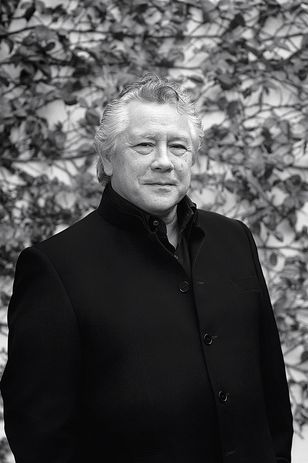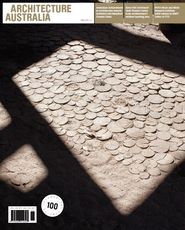
Karl Fender.
Image: Vikky Wilkes
It was pleasing to learn of the Australia Day honour accorded to Michael Rayner. Director of Queensland-based practice Cox Rayner, he was appointed a Member of the Order of Australia for service to architecture – particularly his leadership role in the planning and design of the built environment – and to the community of Queensland.
As always, the honours list included Australians from all walks of life and fields of endeavour, who have contributed to the growth and prosperity of our country. Among them was David Gaunt, co-founder of Sydney’s Gleebooks bookstores and a lifelong promoter of Australian authors. Gleebooks opened for business in 1977, when the local publishing world was enjoying a renaissance and a rash of new talent, including Helen Garner, David Malouf, Peter Carey and Frank Moorhouse.
That era was a major turning point for the Australian literary world. Booksellers and local publishers began acknowledging the competitive nature of their marketplace, the need for change to capture reader interest and grow sales of local authors, and the opportunities presented by focusing on writers to sell product and profession, rather than product alone. This shift in focus has helped bring international acclaim to many of our best Australian authors – Malouf, Carey and Tim Winton among them – not to mention sold-out writers’ festivals and booming retail sales.
Any lessons here for the architectural profession? I think so. With few exceptions, architects are not traditionally known for being media hungry or even media savvy. This systemic reticence works counter to the profession’s collective best interests. To promote the valuable role of an architect, and champion the value of good design, we as architects must start marketing ourselves more aggressively.
The Institute has already recognized this need and is now taking a greater “publishing” role in promoting our leading members to the Australian public, through the Australian Achievement in Architecture Awards (AAAA), which are covered in the March 2011 issue of Architecture Australia.
Launched last year in Brisbane, these people-focused awards are designed to celebrate more publicly the achievements of outstanding Australian architects. In addition to the Gold Medal announcement, the AAAA include the Leadership in Sustainability Prize, the Glenn Murcutt Student Prize, the Neville Quarry Architectural Education Prize, the Student Prize for the Advancement of Architecture and the Dulux Study Tour Prize.
Congratulations to our Glenn Murcutt Student Prize winner, Sam Bresnehan from the University of Tasmania, and our Dulux Study Tour winners: Carly Barrett, Christina Cho, Yuri Dillon, Jefa Greenaway and Brendan Murray. Also to our Neville Quarry Architectural Education Prize winner, Anna Rubbo, and Student Prize for the Advancement of Architecture winner, Daniel Brookes.
Our Leader in Sustainability Award goes to Sydney-based Healthabitat, with congratulations in particular to architect Paul Pholeros and his co-directors, anthropologist Stephen Rainow and medical specialist Dr Paul Torzillo. These three colleagues have spent the past twenty-six years improving living conditions for Indigenous communities.
Congratulations also to Dr Marcus White, recipient of the inaugural National Emerging Architects Prize, which is awarded to a model professional whose achievements are recognized as an inspiration to the emerging demographic.
This year, the National President’s Prize nomination was for me an obvious choice and one that gave me great pleasure. This award celebrates individual exemplary contribution to the advancement of architecture outside the areas of design, practice and education. For her leadership as our Commissioner during the 2010 Venice Architectural Biennale, and her ongoing commitment to that role in 2012, our congratulations to Janet Holmes à Court.
Finally, the 2011 Gold Medal. This coveted award was presented to an individual who has displayed a lifelong commitment of the highest order to architecture, with passion, optimism and generosity of spirit. It is an honour to see Graeme Gunn, a modest man of immense talent, awarded during my term.
In addition to designing a very fine body of built work, Graeme dedicated ten years – at arguably the critical point of his practice’s evolution – to changing the course of architectural education while at RMIT, initially as head of the School of Architecture and Building between 1972 and 1977, then as dean of the Faculty of the Built Environment from 1977 to 1982.
An avowed urbanist, Graeme continues to advocate for sustainable and excellent city design within the profession, throughout industry and across government. On behalf of the profession, I congratulate him on this much-deserved recognition.















